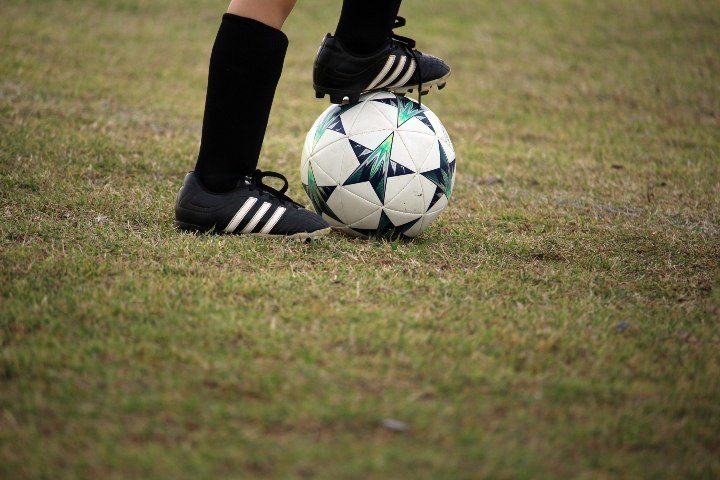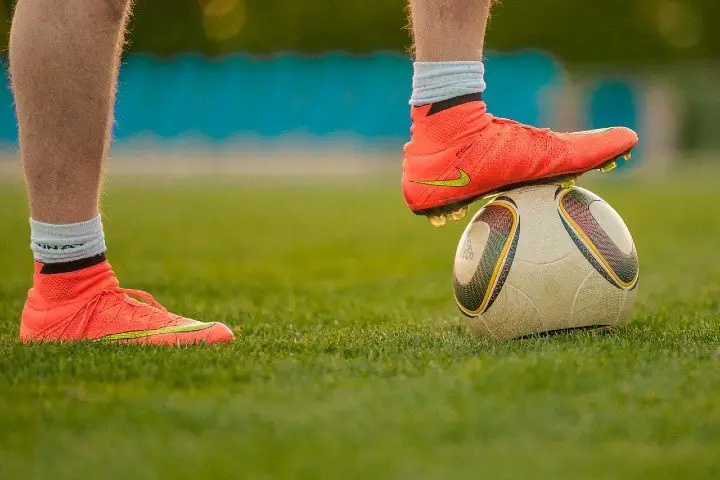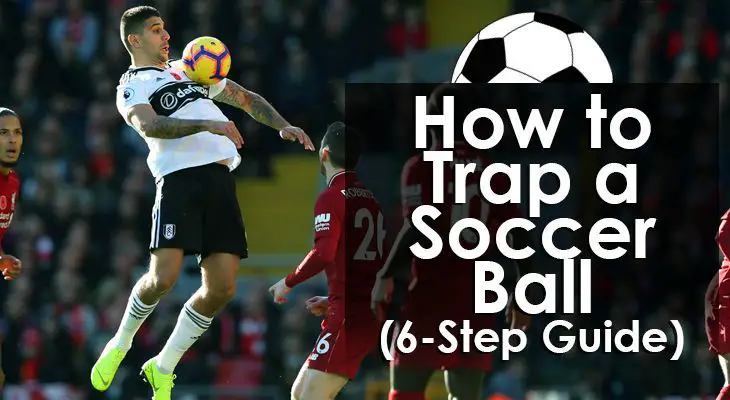How to Trap a Soccer Ball (6-Step Guide)
While it may seem like a simple skill, trapping a soccer ball can be deceptively hard.
As it helps you to stop the ball quickly, gain control, and set yourself up to either pass on or take a shot yourself... it’s an absolutely essential skill to master.
Key to trapping the ball is your timing, touch, and technique.
All of which need to be spot on if you don't want it to cannon off you to an opponent.
To help you master the move, let's take a look at how to trap the soccer ball, breaking it down into six simple steps for you to work through.
How to Trap a Soccer Ball (6 Steps)
As players can receive the ball at every conceivable angle and speed, players need to be alert and attuned to what’s going on around them and be ready to control the ball at a moment's notice.
The idea with trapping is that you cushion the ball and bring it under control before playing it on to a teammate or taking a shot.
By working on your trapping in training, you'll hone both your touch and make sure you’re prepared for whatever comes your way out on the pitch.
Before taking a quick look at how to trap the ball with your thighs, chest, and even head, we'll first work our way through how you can master the move with your feet.
This is because much of the positioning, posture, and procedure is the same, regardless of what part of your body you use to bring the ball under control.

1. Be Aware of What’s Going On Around You
As you can receive the ball at any moment -- either from a pass, ricochet, or rebound -- it’s important that you keep your head up and follow what’s going on in the game.
This will win you valuable seconds and help you to react quickly when the ball comes your way.
Besides giving you more time to focus on your footwork and position yourself, scanning your surroundings also lets you know if there are any opponents near you.
Then you'll know how much time and space you have to trap the ball and pass it or take a shot.
2. Track the Ball as it Comes to You
When the ball is coming to you either along the ground or in the air, keep your eyes on it so that you can see whether it curves at all or is going to be intercepted.
By tracking the ball you'll know exactly how, when, and where to set yourself up.
This means you can move both your feet and body into position to deal with a tricky bounce, react to any spin, or manoeuvre yourself in front of your marker.
3. Position Yourself Perfectly
Now that you've tracked the ball you should know exactly where to place yourself to trap.
As it can be quite complicated plucking the ball out of the air with your toes or killing a powered pass without it bouncing too far away, it’s best if you place your body in line with where the ball is travelling.
In time you will learn to control it in more challenging scenarios, but at this early stage it’s best to position yourself behind the ball and remain on your toes, ready to react.
4. Cushion the Ball
Normally the easiest way to trap the ball is with the inside of either of your feet.
As such, position yourself to receive it by turning your foot sideways to cushion and control it.
Your timing and technique is crucial.
If you get it wrong, you’re liable to miscontrol it and send the ball bouncing away to your opponent.
Be very careful and cushion the ball so that it stays close to you... but not right under your feet in an awkward position.
Also, focus on cushioning it at just the right height.
Place your foot too low and the ball may bounce over, too high and it risks squirming beneath it.
While it’s simplest to start trapping the ball with the instep of your feet, with practice you'll also be able to control it with not only the laces and sole of your boot, but the outside of your feet too.
5. Absorb the Impact of the Pass
Key to cushioning the ball and keeping it under control is how you absorb the impact of the pass or ricochet you received.
Instead of going to kick the ball or hold your leg and foot rigid, you want to deftly draw it back, just as the ball is about to arrive.
This then takes the 'sting' out of the ball.
Meaning -- if you've timed your touch correctly and perfected the technique, it should just drop down at your feet, ready for you to continue playing.
If you don't draw your foot back and relax your body then the ball is most likely to bounce off and away from you.
6. Kill the Ball and Keep Playing
To pull off the perfect trap, put one foot on top of the ball and apply a bit of pressure, completing stopping it where it is.
While it may be tempting to admire your technical touch and tricky trap of the ball, your close control will have been for nothing if you don't keep playing immediately afterwards and make the most of the space and time you’ve won.
This final step is not always necessary depending on what you want to do with the ball and how much pressure you are under on the pitch.
With the ball under complete control at your feet, you’re free to dribble off, pass it on, or take a shot.

Trapping With Your Thighs, Chest and Head
The positioning and procedure you follow is similar when it comes to trapping the ball with other parts of your body.
What is again important is your timing, touch, and technique... and how you take the power out of the ball to stop it bouncing away from you.
a. Thighs
With your thighs, you want to mirror the same movements we went through above, simply using them instead of your feet to control the ball if the pass is a bit higher.
Absorb the impact of the ball by bringing your thigh down or back just as it arrives.
You can control and cushion the ball with the top or insides of them and possibly the outside too if you are very talented!
b. Chest
As it’s a bigger and broader target than both your feet and thighs, your chest can be used to great effect to control and trap the ball when it is in the air.
While its size is obviously an advantage, it’s still crucial that you focus on getting your positioning and posture right.
When it comes to chesting, you want to lean back slightly as this angle helps to take the speed and bounce out of the ball.
If you stand too straight and rigid, the ball is likely to bounce off you like a post and roll out of reach.
By leaning back a bit and pushing your chest up just as the ball arrives, you'll cushion it with the ball dropping down before you, ready for you to run off with it.
c. Head
The hardest trapping technique to master is with your head as it demands great concentration and a clean connection.
The first few times you practice it’s very likely that the ball will bounce off your head in the wrong direction or too far away from you.
If the ball arrives in the air and is too high to chest, then you can cushion and control it with your head, again absorbing the impact and taking the momentum and movement out of the ball.
While this version sees the ball rise slightly in the air before dropping down in front of you, another option is to do a quick, sharp nod, directing the ball down to your feet where you can then bring it under control
Conclusion
Not anywhere near as easy as you might think, trapping the ball demands a high level of technique with a player's timing and touch needing to be spot on.
Key to the skill is how you cushion the ball and absorb the impact and in doing so stop it from bouncing away from you.
To give yourself the best chance of success, you need to concentrate and focus on your positioning and footwork, watching the flight of the ball all of the way.
While it can be a challenge, with practice, patience and perseverance you'll soon be a pro at trapping the ball and will surely see improvements in your overall play and performances.

